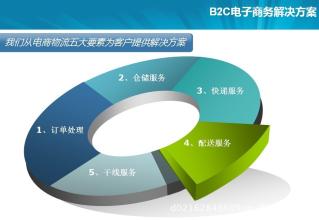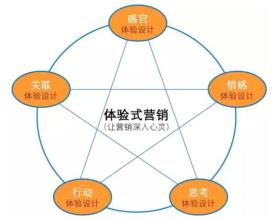HND DE3X 35: Business Culture and Strategy
Lang Song Business Culture and Strategy of J D Wetherspoon Reported by: Lang Song 1 trade 07
HND DE3X 35: Business Culture and Strategy
Contents Page
Introduction P.3 Section 1 External Environment P.3
1.1 SPELT Analysis for J D Wetherspoon P.3
1.2 SWOT analysis in 21st century
1.3 Guidelines for J D Wetherspoon Section 2 Organization Culture
2.1 Organization culture in J D Wetherspoon
2.2 The type of culture for J D Wetherspoon
2.3 Relationship between Organizational culture and
Organization behavior
2.4 A different type of culture for J D Wetherspoon to choose Section 3 Business Strategy
3.1 Brief introduction of four strategies in an organization
3.2 The strategy that use during the 1980s and 1990s
3.3 Compare the strategy between 21st and 80s and 90s
3.4 The factors considered when changing business strategy
3.5 ‘Business strategy’ and ‘Business choice’
3.6 Key issues considered when managing its strategy Section 4 Change
4.1 Forces for change
4.2 Social Responsibility
4.3 The role of the management of J D Wetherspoon
4.4 Overcome any resistance to change
Conclusion References Lang Song 2 P.4 P.4 P.5 P.5 P.6 P.6 P.7 P.7 P.7 P.7 P.8 P.8 P.9 P.9 P.9 P.9 P.10 P.10 P.10 P.11 P.11 trade 07
HND DE3X 35: Business Culture and Strategy
Introduction
J D Wetherspoon plc was founded by Tim Martin who opened the first J D Wetherspoon pub in 1979. He based his model for a pub on a 1946 essay by George Orwell which referred to an imaginary pub called „Moon Under Water‟. This offered cheap beer, good conversation and solid architecture. As a result, the company motto of J D Wetherspoon is „cleanliness, beer, service and maintenance‟. J D Wetherspoon, incidentally, takes its name from a Mr Wetherspoon who was Tim Martin‟s primary school teacher. The „JD‟ is from a character in a television programme „Dukes of Hazzard‟. J D Wetherspoon became a plc in 1992 at which time it consisted of a chain of 44 pubs. It now has over 600 pubs, which means that it has expanded on average at the rate of about one new pub each week. In 2000, for example, it opened over 90 new pubs and over 50% of the finance for the new developments came from cash generated by the business. In 2002, about 10 years after flotation, its share price rose to more than ten times its original value.
In my report, I will refer four knowledge points, such as external environment, organization culture, business strategy and change. In order to analysis whether J D Wetherspoon plc remains a successful business, what factors made J D Wetherspoon to achieve its goals, and to show how the company to take appropriate measures to deal with problems.
Section 1: External Environment
1.1 SPELT Analysis for J D Wetherspoon
Social factor
This factor had an influence J D W company on the licensing trade during 2002-2004, supermarket began selling drinks, particularly premium large, at loss-leader prices. This makes it difficult for pubs to compete on price and encourages drinking at home. Political factor
There was increasing public and government concern about binge drinking and the consequent anti-social behavior, particularly in city centers. Pubs of J D
Wetherspoon plc cannot be seemed to be encouraging this state of affairs as it brings them bad publicity.
Economic factor
J D Wetherspoon plc offered cheap beer and sold a wide range of real ale beers at relatively low prices. During 2002-2004, supermarket began selling drinks,
particularly premium large, at loss-leader prices.
Legal factor
The traditional link between the brewing companies and pubs known as the „tied house‟ system had been broken by a ruling from the Monopolies and Mergers Commission which severely limited the number of pubs which a brewer could operate. This had forced J D Wetherspoon plc to choose between brewing and retailing. Monopolies and Mergers Commission have been given responsibility to control, usually for the government.
Lang Song trade 07 3
HND DE3X 35: Business Culture and Strategy
Technological factor
In the J D W pubs, the plasma screens can make a special atmosphere of the pubs. And it makes up disadvantage that the lack of TV sets.
1.2 SWOT analysis in 21st century
I will show you a diagram about the J D W‟s internal factors and external factors which consisting of its strengths, weaknesses, opportunities and threats by SWOT
1.3 Guidelines for J D Wetherspoon
O and T can be identified by using a classification
Any organisation will want to maximize strengths and minimize weaknesses. In order to seize opportunities and remove threats. Change way arises from any of these four areas. Organisations need to monitor their SWOT, especially at times of crisis, and be responsive to changes that have already occurred. They also need to plan for anticipated changes and be fully prepared to meet them. SWOT analysis is a very useful tool but it is only a starting point.
Lang Song trade 07 4
HND DE3X 35: Business Culture and Strategy
Strengths and weaknesses can be identified an internal audit.
Strength and weakness depend on the company‟s performance in the past. They can be found using internal audit. For example, the JDW are including the provision of specially adapted toilets for customers with disabilities, this strength is belong to J D W‟s internal advantages.
Past O and T may lead to current S and W
For example, the JDW seized the opportunity to using new information communication technology innovations—Wi Fi, so it has attract more customers. Furthermore, if the JDW did not deal with the potential threats well, this may be become its weakness.
S, W, O and T change over time
In most time, the JDW without TV screens may be can become a strength, because it can offer a quite and comfortable atmosphere to customers, make them enjoy themselves in the pub; but on the other hand, when the World Cup or other Tournaments held, it cannot show the televised football, here, the strength become a weakness.
Strengths and weaknesses can be at the same instant
For example: In JDW, they do not play music or TV programmers, the strengths is that it can provide a quiet atmosphere for customers to socialize and converse; meanwhile, this make the competitors‟ premises more attractive.
Interpretation for SWOT with caution
To some extent, SWOT analysis is subjective, so it has limitation, the JDW using this analysis need be treated with caution.
The use of SWOT
The SWOT analysis does not determine strategy, it used in conjunction with other tools for audit and analysis, so you can choose the highlight factors used into account.
Basic attention on using SWOT
JDW can take action on any one or more of the four elements in a SWOT, but they can not only pay attention to its single aspect, such as threats, and ignore its opportunities, they should consider things from every angle.
Section 2: Organization Culture
2.1 Organization culture in J D W
Definition of Organization culture
Organization culture is the pattern of assumptions, values and norms shared by organizational members. The culture of an organization can significantly affect the Lang Song trade 07 5
HND DE3X 35: Business Culture and Strategy
way in which the company operates, particularly in terms of its effectiveness. Culture is the environment that surrounds staff at work all of the time. It is a powerful element that shapes the staff‟s work enjoyment, work relationships and work process. However, it sometimes cannot actually see.
Definition of shared values and taken-for-granted assumption
Generally speaking, shared values means formal culture while taken-for-granted assumptions informal culture. In this sense, control systems, organizational structure, power and structures can be regarded as shared values; rituals, stories, physical symbols and common languages can be called taken-for-granted assumptions.
Examples of shared values and taken-for-granted assumption
In this case, one example from J D Wetherspoon of shared values is that the company empowered its staff kept in touch with weekly newsletters, a monthly company video and by publicizing the minutes of Board meetings. This policy reflected the company‟s power structure, which was a deliberate attempt by senior management to develop a particular set of value, which encouraged the employees to work actively and creatively.
The example of taken-for-granted assumption is that J D Wetherspoon welcomes people form all kinds of different backgrounds to join the company. This reflected the company‟s symbols.
2.2 The type of culture for J D Wetherspoon
When the customers have the new demanded, such as the new taste of beer, pubs will get the rapid feedback. Meanwhile, if a pub cannot make profit any more, it will withdraw the market easily. In other word, the risk is lower. According to the Deal and Kennedy‟s Model, I think J D Wetherspoon‟s culture is the type of work-hard and play-hard culture.
Work-hard and play-hard culture‟s stress comes form the quantity of the work rather than uncertainly. The high-speed action will lead to the high-speed reaction. The basic concepts and beliefs of this type are focusing on the customers. They should find the customers‟ need and meet it. J D Wetherspoon is the pub that concern on its services. It should find and know the customers‟ needs timely and meet them. Otherwise the power of competition becomes lower. For example, each of J D Wetherspoon pubs has a ventilation system because majority customers do not like smelling of smoking. It also offers specially adapted toilets for customers with disabilities. It is obviously that when the company knows the customers needs, it make reaction quickly.
2.3 Relationship between Organizational culture and organization behavior
Wetherspoon‟s has consistently claimed that people are its best asset and offers the flexible training policy. Every member of staff is considered as potential management material. It is the formal culture. So the company gives every staff‟s lifelong training and provides equity opportunity to gain relevant qualifications. Thus the sense of Lang Song trade 07 6
HND DE3X 35: Business Culture and Strategy
loyalty will be build. The culture influences the behavior.
The company has adopted some suggestions from employees, such as starting training courses later in the day to save on travel costs, introducing a „hotness‟ rating on the curry menu and so on. It is obviously that the company has the policy that staff can be involved to discussion the company‟s operations. The behavior reflects the culture. The culture and behavior in J D Wetherspoon are identically.
2.4 A different type of culture for J D Wetherspoon to choose
Process is the type which has low feedback and low risk. The stress of it may come from the internal policies and stupidity of the system. They focus on the security of past and of the future. This type of organization concerns on work patterns and titles. If J D Wetherspoon chooses the type of process, the result is may be worried. The company cannot get the information about market and make reaction quickly. The management will not flexible and become stability. Furthermore, the company cannot renovate the customers‟ needs and new technology. It will cause loss the power of competition.
Section 3: Business Strategy
3.1 Brief introduction of four strategies in an organization
Market Penetration
It markets its existing products to existing customers. This strategy increases revenue by promoting the product, repositioning the brand and enlarging its business.
Market Development
Here we market our existing product range in a new market. This means that the product remains the same, but it is marketed to a new audience. Exporting the product, or marketing it in a new region, is examples of market development.
Product Development
This is a new product to be marketed to our existing customers. Here we develop and innovate new product offerings to replace existing ones. Such products are then marketed to our existing customers. This often happens with the auto markets where existing models are updated or replaced and then marketed to existing customers.
Diversification
This is where we market completely new products to new customers. There are two types of diversification, namely related and unrelated diversification. Related diversification means that we remain in a market or industry with which we are familiar. For example, a soup manufacturer diversifies into cake manufacture (i.e. the food industry). Unrelated diversification is where we have no previous industry or market experience. For example a soup manufacturer invests in the rail business.
3.2 The strategy that use during the 1980s and 1990s
Lang Song trade 07 7
HND DE3X 35: Business Culture and Strategy
The strategy that be used in 1980s and 1990s are market penetration. It is the existing product to the existing customer. The company relied on growth at that time by acquiring suitable sites and converting them into J D Wetherspoon pubs. The company did not open it in other country or take the pub into other forms. So the products and the market are both don‟t change.
The J D Wetherspoon chooses that strategy have some advantages as follows:
1. The staff has a loyalty in the company. It is useful for the company to growth.
2. The expansion of company does quickly and stably. It means that the profit for the company from sales is good.
3. The company growth organic, the share price rise ten times than its original value.
4. The company quickly responds the change of environment. It attracts more customers that some characteristics that other pub do not possess. It builds good loyalty with customers.
3.3 Compare the strategy between 21st and 80s and 90s
In 21st the strategy is product development. The company entered into new market and the company also does some changes on their original services such as reduce alcohol in cocktail pitchers or providing breakfast.
The strategy used in 80s and 90s make the company grows stably. It helps the company build a good loyalty with the customer. The company has enough capital to run the company as the sales grow quickly. The strategies that use in 21st help the company expand the business and improve the competitiveness.
J D Wetherspoon seems to be following a different strategy which called Focused differentiation during the 21st century. For example, pubs now serve breakfast and open earlier in the morning before normal licensing hours begin at 11:00 a.m.. The strategy in 1980s to 1990s didn‟t help the company exist well in today‟s competitive market. So, the company changed its strategy to maintain its market share and develop its profit.

3.4 The factors considered when changing business strategy
The situation may also accident. Changes in an organization‟s strategy are caused by changes in the environment within which organisation operate. If the structure needs to be changed, the manager will change their strategy. The staff may be willing to follow the strategy. However, if the company takes the new product in the market; it can help the company get high market share.
Social factor
If JDW change its business strategy, there are many factors should be considered, such as the changes in current marketing environment. The social attitudes to binge drinking indicate the threat to JDW.
Culture factor
In addition, another factor is existing management. Tim Martin may have been committed to the old strategy, while others may have taken advantage of the Lang Song trade 07 8
HND DE3X 35: Business Culture and Strategy
slowdown in profits and growth to sideline him. His style may have been perceived by others as more appropriate to a previous time. The involvement and communication of staff can be an advantage but maybe a hindrance for them.
3.5 ‘Business strategy’ and ‘Business choice’
Concepts of business strategy and strategy choice
Business strategy is for every manager, needs to be effective and well plan to steer an organisation as efficiently and successfully as possible. It must make a correct business strategy in right time.
Strategic choice is viewed as an ongoing process in which the planned management of uncertainty plays a crucial role.
The connection between the terms business strategy and strategy choice
During the 1980s and 1990s, JDW adopt the differentiation as their business strategy. They do not play music or show TV programmers in their pubs and also established at least a quarter of space is non-smoking area. Though this strategy, it became more attractive and intensify its marketing competitiveness.
3.6 Key issues considered when managing its strategy
Communication with staff
Management should be clear about the message and ensure that it always expresses it in a similar manner regardless of the audience. From the case, Wetherspoon‟s has
consistently claimed that people are its best asset. Every member of staff is considered as potential management material and 20% of senior managers began as bar staff or cleaners. It recognizes that employees will not stay with it for all their working lives but does wish to build a sense of loyalty.
Offering consumers ‘a unique value’
Another key issue is that offering consumers „a unique value‟, perceived or real.
Combining from the organization‟s products and services so that the organization can offer more benefits to the consumer for a lower price. For example, supermarkets began selling drinks, particularly premium lager, at loss-leader prices. This makes if difficult for JD Wetherspoon pubs to compete on price and encourages drinking at home. Thereby, the company should make a suit of price strategy. Let consumers realize JD Wetherspoon without end offer good service and that concrete price.
Section 4: Change
4.1 Forces for change
Increase competition
By the start of the twenty first century, J D Wetherspoon was facing much more competition. Supermarkets began selling drinks, particularly premium larger, at
loss-leader prices. There was increasing public and government concern about binge drinking and the consequent anti-social behaviors, particularly in city centre.
Restraining forces also exist in J D Wetherspoon. At the early time of this company‟s Lang Song trade 07 9
HND DE3X 35: Business Culture and Strategy
development, the management kept using their traditional method of operation and did not want to change. In this case, they did not play music or show TV programmes in pubs.
Influences from change
The changes have affected J D Wetherspoon. Their sales and profit growth have slowed down and the share price also fell. They should sell drinks in low-price than the previous year to attract more customers and gain the market share. But the profit growth will be dropped.
4.2 Social Responsibility
The social responsibility factors can affect product design, and spending by customers.
As the pub, J D Wetherspoon has its especially social responsibility. It will limit the drinking. In other word, J D Wetherspoon pubs will not encourage unrestricted drinking. Meanwhile, the government is also concerning the anti-social behavior because of binge drinking. So J D Wetherspoon makes the modification of its produces. The pubs reduce the amount of alcohol in its cocktail pitchers and remove the price incentives to dink larger measures of spirits. However, the situation is not satisfied. The sales of spirits and cocktails are not increase. The profit has been affected.
4.3 The role of the management of J D Wetherspoon
The management of J D Wetherspoon could play an important role which is the Action Research Model in dealing with the changes that have occurred during the period since the year 2000.
Successful action is based on analyzing the situation correctly, identifying all the possible alternative solutions and choosing the most appropriate to the situation at hand. So the company collects the suggestions from members of staff.
In this case, at the beginning of the 21st Century, the retail licensing market had adapted to the changes in the „tied house‟ system and other retail pub chains like Regent Inns and Punch Taverns had been developing their businesses. The basic approach to J D Wetherspoon outlets remains unaltered but it has made some changes, such as, pubs now serve breakfast and open earlier in the morning before normal licensing hours begin at 11:00 a.m.
4.4 Advice to the management of JDW
Advice for overcoming resistance
In order to overcome any resistance to change, management of J D Wetherspoon should concern on something and take any actions. Don not make unnecessary changes is the key element. Managers need to ensure people know why the changes are needed. They can accord to education and communication with employees. Negotiate and bargain with staff rather than dictate. Managers also can analysis what will happen if the changes are not made.
Lang Song 10 trade 07
HND DE3X 35: Business Culture and Strategy
Advice for analyzing change
J D Wetherspoon can create a climate for change. For example, the company can reduce the fear of change, encourage innovation and eliminate any „blame culture‟. The company also can try to identify small but effective changes to introduce the idea of change and create a climate for change. These are few examples of simple ways to introduce effective and accept changes.
Conclusion
In this report, I analyzed the structure and organization culture of JDW from four aspects: external environment, organizational culture, business strategy and change. For the section one, I mainly through SPELT analysis and SWOT analysis to show which factors affected JDW and its strengths, weakness, opportunities and threats. In the section two, I mainly introduced some information about organization culture of JDW. And then I explained the strategy that JDW adopt the different period in section three. Finally, the section four indicates the information of forces for change and against change in JDW. Then gave the suggestions on analyzing change and overcoming resistance to the management of JDW
In JDW, the passionate and skillful employees, who help create JDW as a comfortable place for customers to enjoy the “Wetherspoon Experience” is an important part of JDW. The great brand recognition and high customer satisfaction made it widely accepted by a variety of consumers. Furthermore, it has a good management, organization culture and strategy. It not only meets the needs of modern consumer culture, but also adopted the flexibility strategies—it takes appropriate model of cooperation based on the different marketing. Due to these key factors, the JDW could be so successfully nowadays
References
Business Culture and Strategy: An Introduction topic 5.1, 5.2
Business Culture and Strategy: Advanced topic 5.2, 5.3, 5.4, 5.5
http:// www.huasen.com.cn
http:// www.xzsj.com.cn
http:// www.jdwetherspoon.co.uk
http:// www.baidu.com
Lang Song 11 trade 07
 爱华网
爱华网



